Candidate Key Proteins of Tinnitus in the Auditory and Motor Systems of the Thalamus
- PMID: 40565265
- PMCID: PMC12193441
- DOI: 10.3390/ijms26125804
Candidate Key Proteins of Tinnitus in the Auditory and Motor Systems of the Thalamus
Abstract
To determine candidate key proteins involved in synaptic transmission in the thalamus in tinnitus, we used bioinformatic methods by analyzing protein-protein interaction networks under different conditions of acoustic activity. The motor system was used to analyze the specificity of the response reaction in the auditory system. The databases GeneCard, STRING-, DAVID-, and Cytoscape version 3.9.1 were applied to identify the top three high-degree proteins, their high-score interaction proteins and the gene ontology-biological processes (GO-BPs) associated in the thalamus with synaptic transmission in tinnitus. Under normal hearing conditions, a balanced state of functional connectivity was observed for both systems, the auditory system and the motor system of the thalamus. Under conditions of acoustic stimulation, the GO-BP-enrichment analyses suggest that in the auditory system, tinnitus-related proteins may be involved in responses typically associated with "xenobiotic stimuli"; in the motor system, the activation of the dopaminergic system was observed. Under conditions of tinnitus in the auditory system, key proteins and the GO-BPs indicate the regulation of different developmental processes and regulation by microRNA transcription; in the motor system, tinnitus is also identified as "xenobiotic" but responded with GO-BPs, corresponding to various signaling systems, e.g., tachykinin. Key proteins and their interactions with neurotransmitter receptors may be useful indicators for tinnitus-associated changes in synaptic transmission in the thalamic auditory system.
Keywords: auditory perception; biomarker; synaptic transmission; thalamus; tinnitus.
Conflict of interest statement
The authors declare no conflicts of interest.
Figures
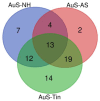
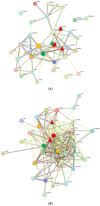


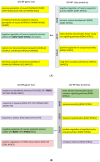

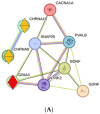


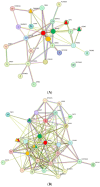


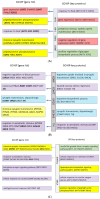
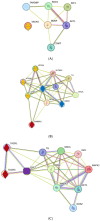
Similar articles
-
Ginkgo biloba for tinnitus.Cochrane Database Syst Rev. 2022 Nov 16;11(11):CD013514. doi: 10.1002/14651858.CD013514.pub2. Cochrane Database Syst Rev. 2022. PMID: 36383762 Free PMC article.
-
Zinc supplementation for tinnitus.Cochrane Database Syst Rev. 2016 Nov 23;11(11):CD009832. doi: 10.1002/14651858.CD009832.pub2. Cochrane Database Syst Rev. 2016. PMID: 27879981 Free PMC article.
-
Systemic pharmacological interventions for Ménière's disease.Cochrane Database Syst Rev. 2023 Feb 23;2(2):CD015171. doi: 10.1002/14651858.CD015171.pub2. Cochrane Database Syst Rev. 2023. PMID: 36827524 Free PMC article.
-
Signs and symptoms to determine if a patient presenting in primary care or hospital outpatient settings has COVID-19.Cochrane Database Syst Rev. 2022 May 20;5(5):CD013665. doi: 10.1002/14651858.CD013665.pub3. Cochrane Database Syst Rev. 2022. PMID: 35593186 Free PMC article.
-
A methodological assessment of studies that use voxel-based morphometry to study neural changes in tinnitus patients.Hear Res. 2017 Nov;355:23-32. doi: 10.1016/j.heares.2017.09.002. Epub 2017 Sep 11. Hear Res. 2017. PMID: 28951023 Free PMC article.
References
-
- Jarach C.M., Karydou K., Trochidis I., Bernal-Robledano A., van den Brandt P.A., Cima R., Cederroth C.R., Lopez-Escamez J.A., Ghislandi S., Hall D.A., et al. The Out-of-Pocket Expenses of People with Tinnitus in Europe. J. Epidemiol. 2024;34:515–525. doi: 10.2188/jea.JE20230358. - DOI - PMC - PubMed
MeSH terms
Grants and funding
LinkOut - more resources
Full Text Sources
Medical

